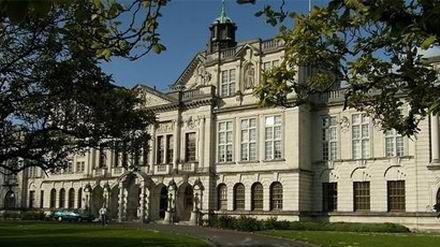2015年11月14日的雅思考试即将到来,烤鸭们都准备得怎么样了。考前几天如果不知道怎么复习,不用急,出国留学网雅思频道为您搜集整理了最新最权威的雅思预测真题,为您的雅思考试提供最好的指南。考前备考只是冲刺而已,要想在考试中拿高分,平时的积累才是最关键。下面是出国留学网小编整理的2015年11月14日雅思阅读真题预测,仅供参考。
2015年11月14日雅思阅读真题预测
Don’t wash those fossils!
Standard museum practice can wash away DNA.
1. Washing, brushing and varnishing fossils — all standard conservation treatments used by many fossil hunters and museum curators alike — vastly reduces the chances of recovering ancient DNA.
2. Instead, excavators should be handling at least some of their bounty with gloves, and freezing samples as they are found, dirt and all, concludes a paper in the Proceedings of the National Academy of Sciences today.
3. Although many palaeontologists know anecdotally that this is the best way to up the odds of extracting good DNA, Eva-Maria Geigl of the Jacques Monod Institute in Paris, France, and her colleagues have now shown just how important conservation practices can be. This information, they say, needs to be hammered home among the people who are actually out in the field digging up bones.
4. Geigl and her colleagues looked at 3,200-year-old fossil bones belonging to a single individual of an extinct cattle species, called an aurochs. The fossils were dug up at a site in France at two different times — either in 1947, and stored in a museum collection, or in 2004, and conserved in sterile conditions at -20 oC.
5. The team’s attempts to extract DNA from the 1947 bones all failed. The newly excavated fossils, however, all yielded DNA.
6. Because the bones had been buried for the same amount of time, and in the same conditions, the conservation method had to be to blame says Geigl. "As much DNA was degraded in these 57 years as in the 3,200 years before," she says.
Wash in, wash out
7. Because many palaeontologists base their work on the shape of fossils alone, their methods of conservation are not designed to preserve DNA, Geigl explains.
8. The biggest problem is how they are cleaned. Fossils are often washed together on-site in a large bath, which can allow water — and contaminants in the form of contemporary DNA — to permeate into the porous bones. "Not only is the authentic DNA getting washed out, but contamination is getting washed in," says Geigl.
9. Most ancient DNA specialists know this already, says Hendrik Poinar, an evolutionary geneticist at McMaster University in Ontario, Canada. But that doesn’t mean that best practice has become widespread among those who actually find the fossils.
10. Getting hold of fossils that have been preserved with their DNA in mind relies on close relationships between lab-based geneticists and the excavators, says palaeogeneticist Svante P bo of the Max Planck Institute for Evolutionary Anthropology in Leipzig, Germany. And that only occurs in exceptional cases, he says.
11. P bo’s team, which has been sequencing Neanderthal DNA, continually faces these problems. "When you want to study ancient human and Neanderthal remains, there’s a big issue of contamination with contemporary human DNA," he says.
12. This doesn’t mean that all museum specimens are fatally flawed, notes P bo. The Neanderthal fossils that were recently sequenced in his own lab, for example, had been part of a museum collection treated in the traditional way. But P bo is keen to see samples of fossils from every major find preserved in line with Geigl’s recommendations — just in case.
Warm and wet
13. Geigl herself believes that, with cooperation between bench and field researchers, preserving fossils properly could open up avenues of discovery that have long been assumed closed.
14. Much human cultural development took place in temperate regions. DNA does not survive well in warm environments in the first place, and can vanish when fossils are washed and treated. For this reason, Geigl says, most ancient DNA studies have been done on permafrost samples, such as the woolly mammoth, or on remains sheltered from the elements in cold caves — including cave bear and Neanderthal fossils.
15. Better conservation methods, and a focus on fresh fossils, could boost DNA extraction from more delicate specimens, says Geigl. And that could shed more light on the story of human evolution.
希望以上由出国留学网雅思考试栏目为大家整理的《2015年11月14日雅思阅读真题预测》一文能给大家提供帮助!出国留学网及时为大家提供雅思考试最新动态,大家按Ctrl+D即可收藏本站!
猜你可能喜欢:



